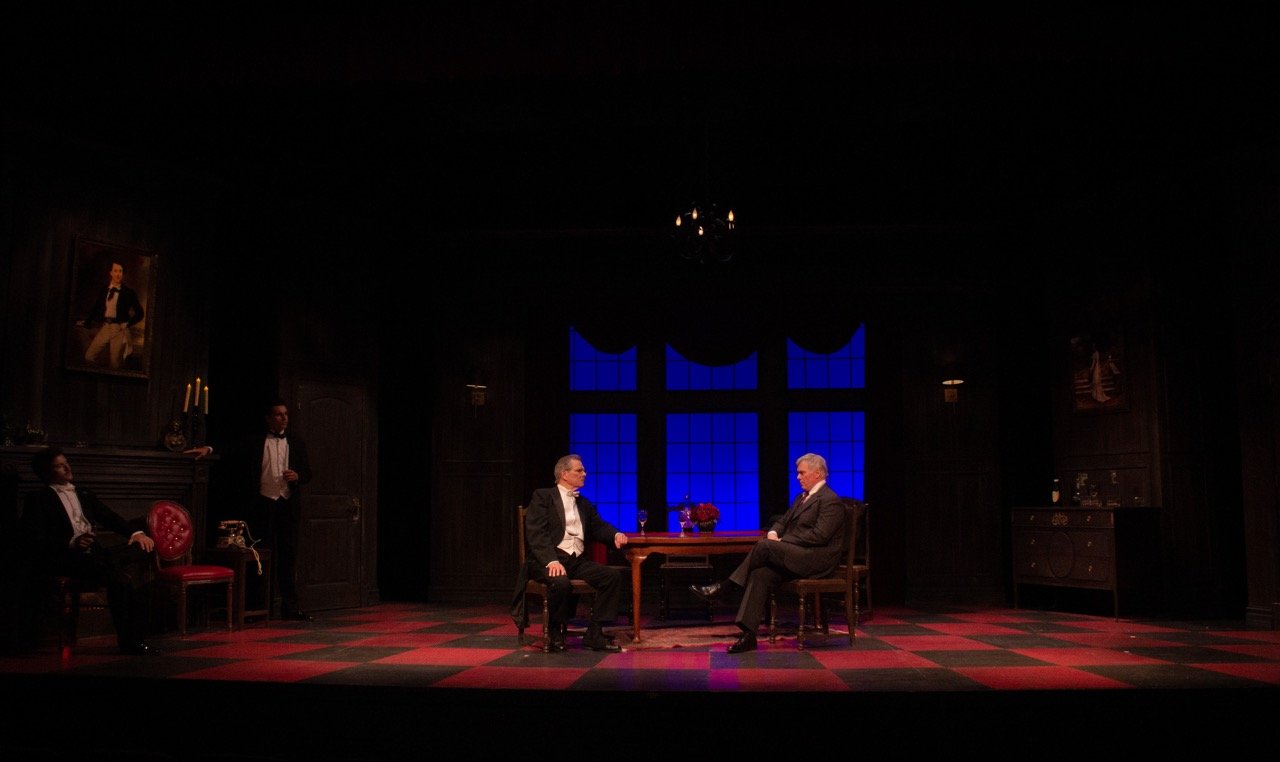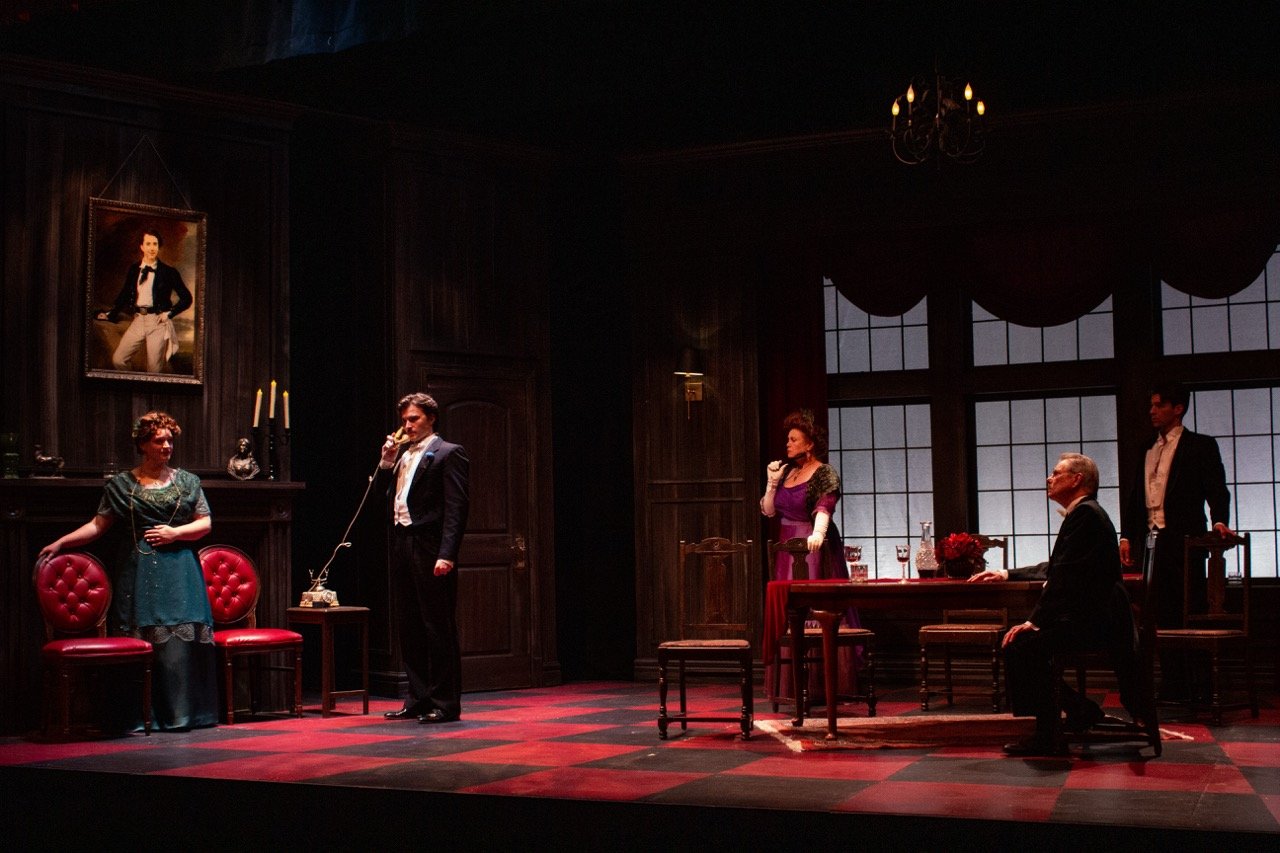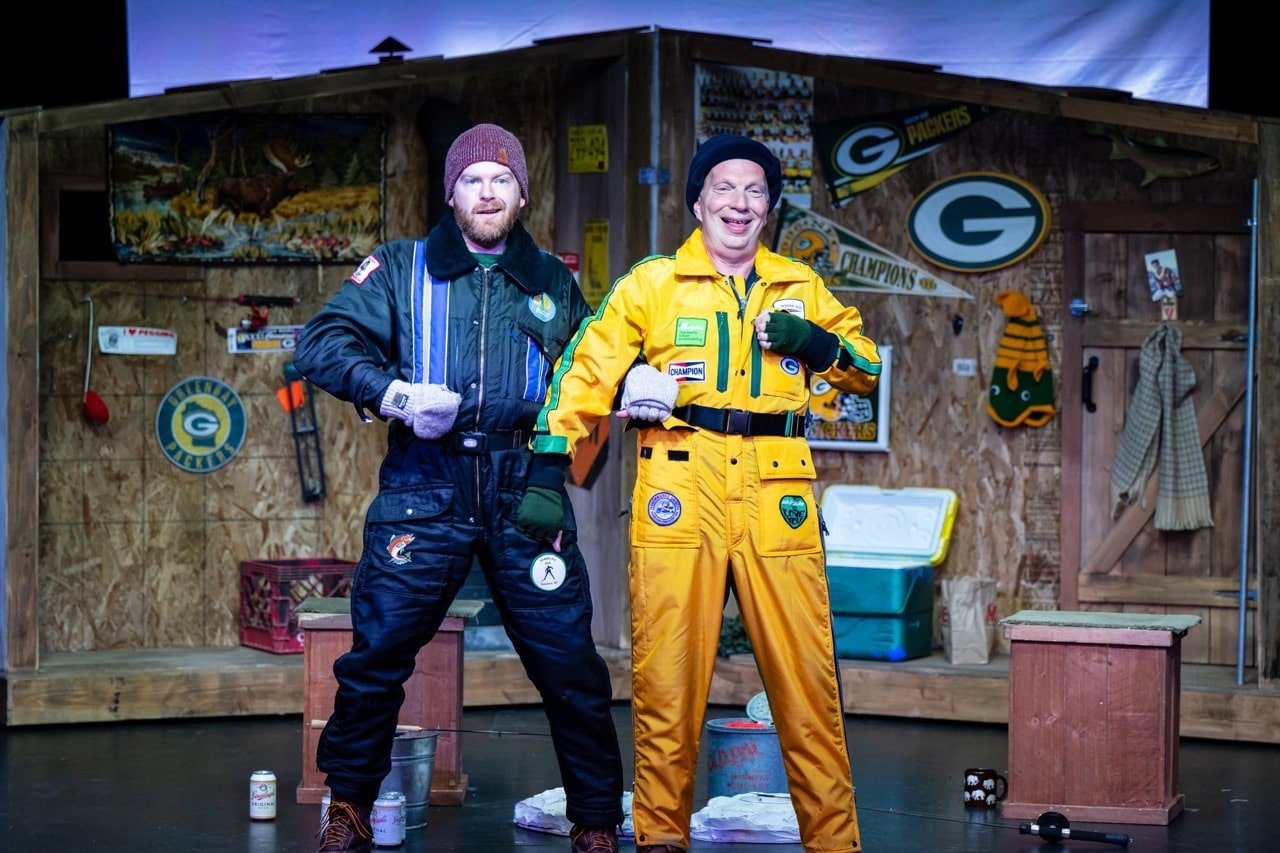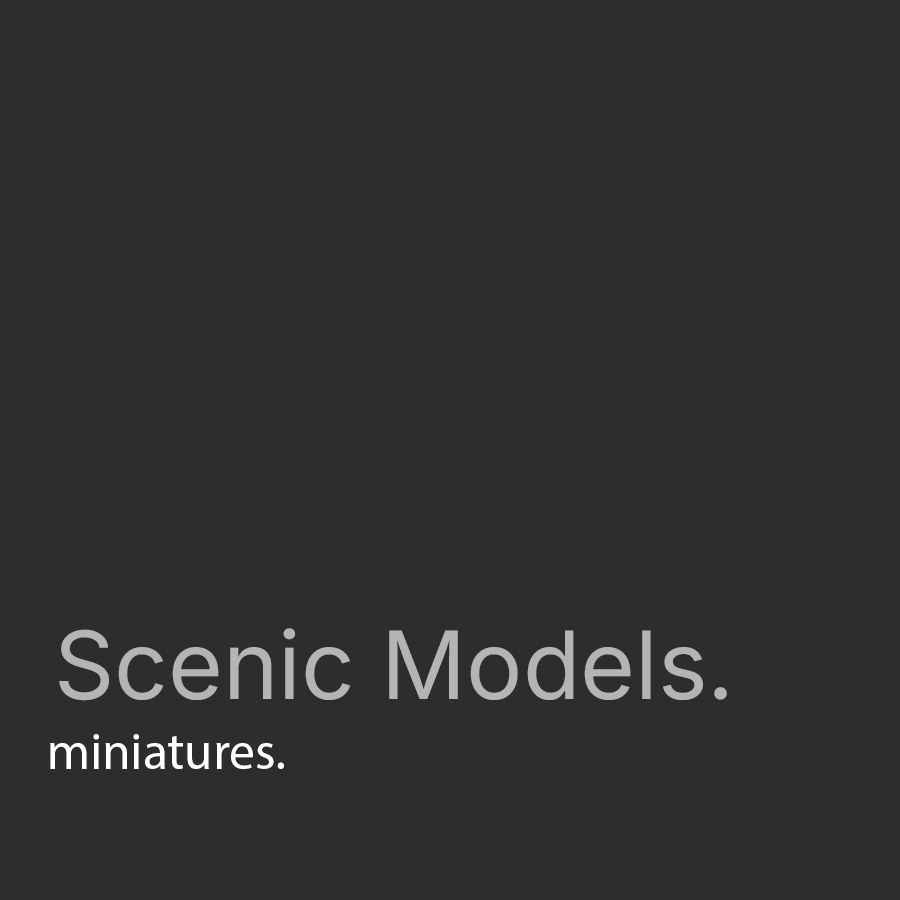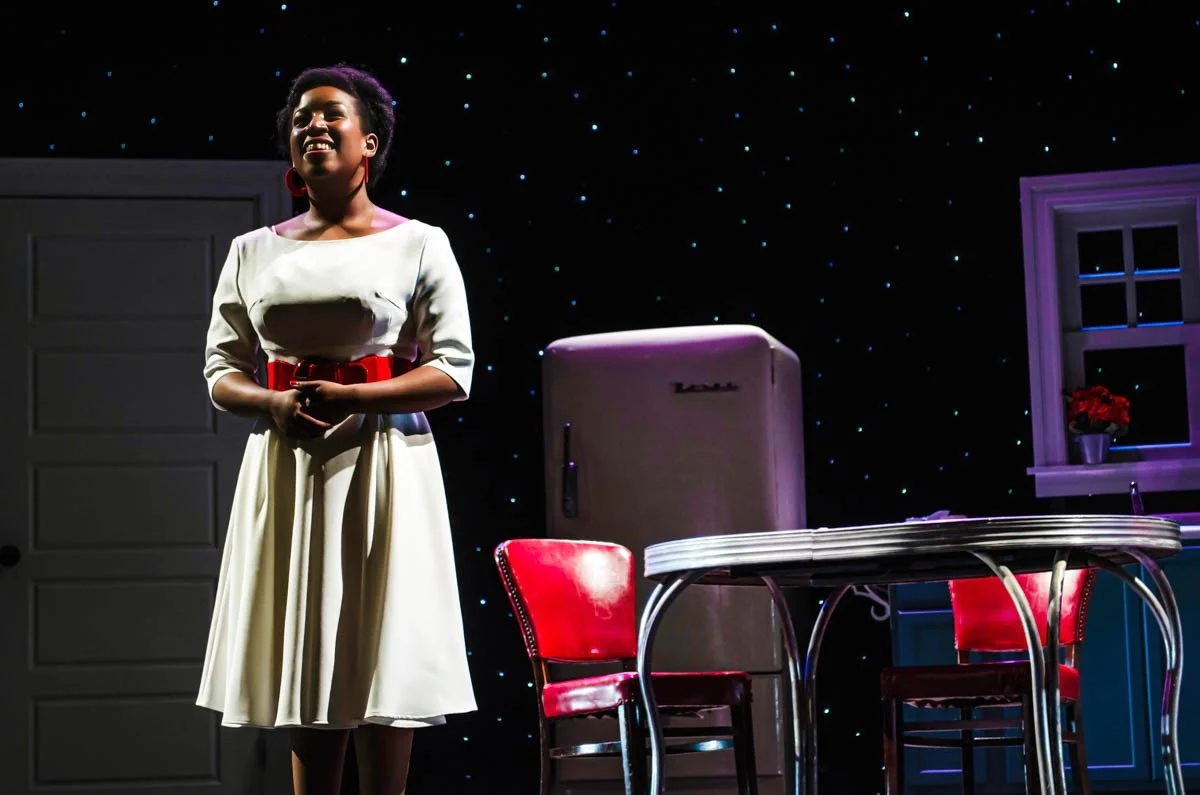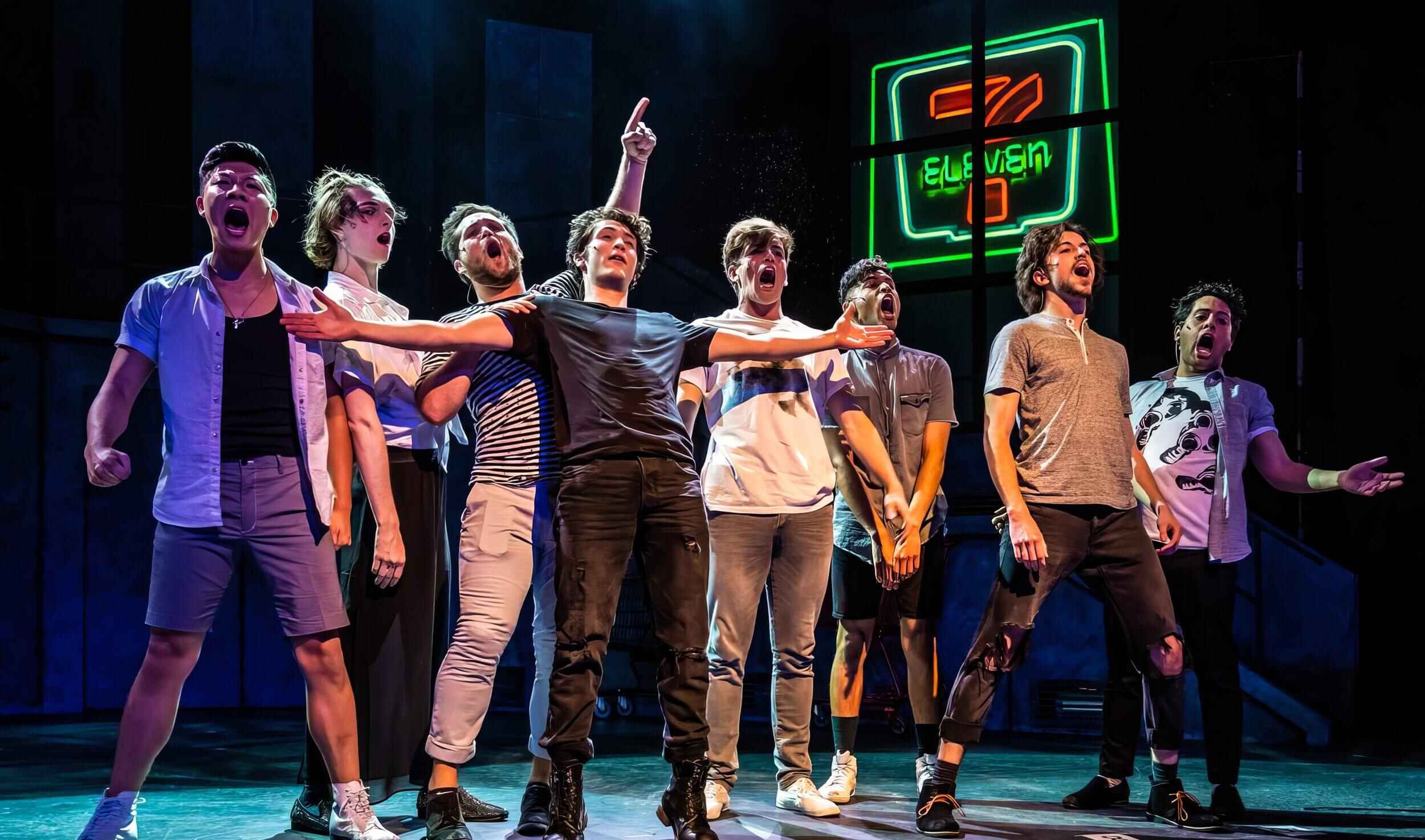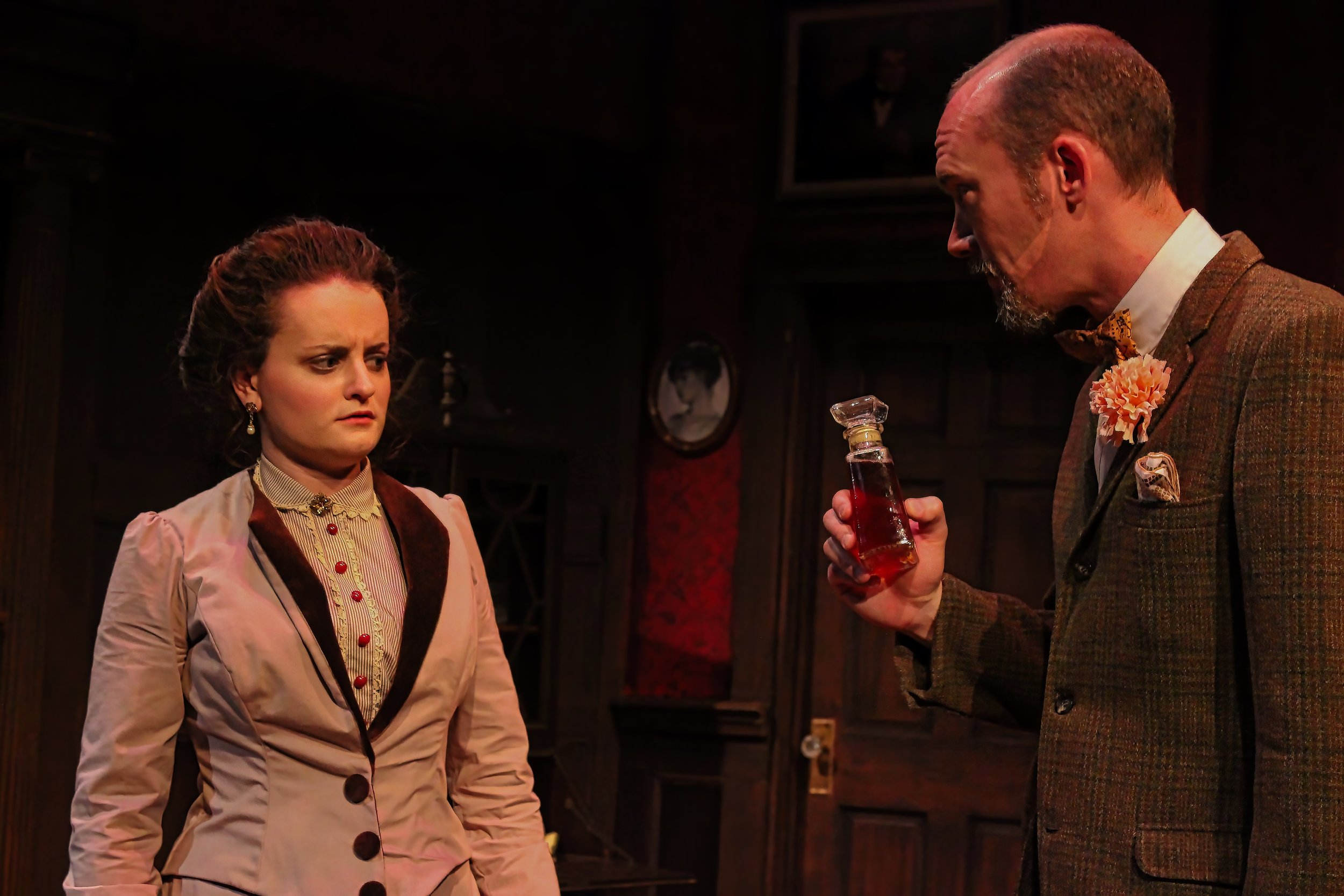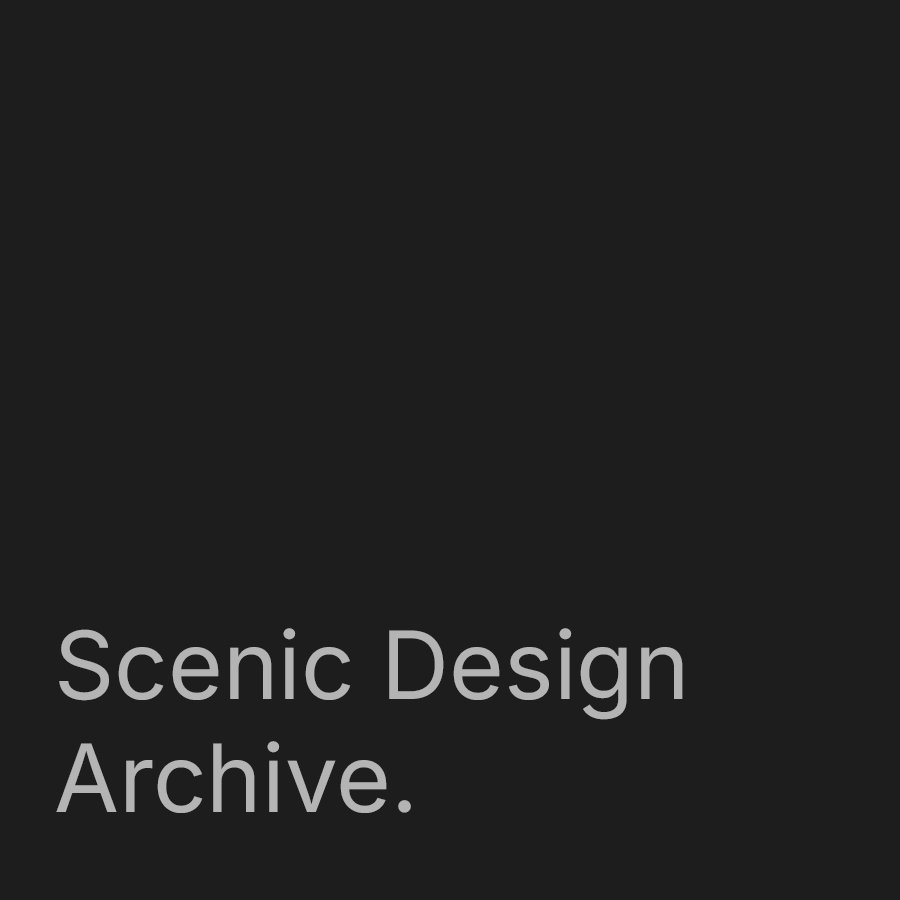An Inspector Calls
Okoboji Summer Theatre — 2022
Design Notes
For An Inspector Calls, I focused on mood, symbolism, and psychological tension—building a world that mirrors the play’s brooding atmosphere and sharp critique of class and conscience. Working with director Stephen Brotebeck, we aimed to heighten moral ambiguity and accountability.
Imposing Gothic architecture—tall, arched windows with divided panes—conjures grandeur and isolation. These apertures double as dramatic devices for shadow play and silhouette, revealing or obscuring characters to reinforce mystery and surveillance.
At ground level, a red-and-black checkerboard floor in forced perspective pulls the viewer into a subtly distorted reality. The illusion echoes the characters’ unraveling and suggests danger, judgment, and duality. The environment feels rigid yet unstable—poised for the facade to rupture.
Strategic lighting punctuates interrogations and revelations. As the Inspector strips away the Birling family’s defenses, the set becomes a silent accomplice, tightening into a space that grows claustrophobic and abstract.
Rather than a realistic Edwardian drawing room, the design leans expressionist. Every choice sits between appearance and consequence, individual action and collective impact. Like the Inspector, the set holds up a mirror—asking us to consider the weight of our actions.
Ultimately, the design isn’t just a container; it’s an active participant in the play’s moral reckoning.
Creative Team

Brandon PT Davis is a scenic and experiential designer whose work spans theatre, themed entertainment, and education. With more than 130 productions to his name, he explores how technology, storytelling, and collaboration shape the art of scenic design. His blog, Scenic Insights, reflects on design philosophy, process, and emerging tools while sharing resources for students and professionals alike.


